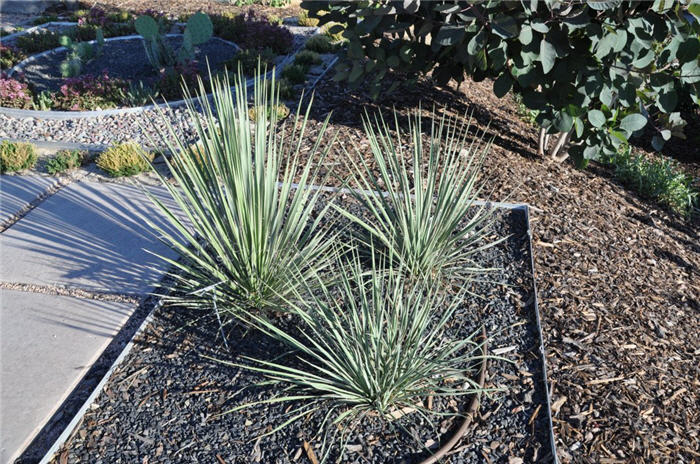| Botanical Name: Yucca baileyi | |
| Common Name: Baileys Yucca |

-
Anatomy
-
Culture
-
Design
Plant Type
Broadleaf Evergreen, Shrub
Height Range
3-6'
Flower Color
White
Flower Season
Spring
Leaf Color
Green, Grey Green
Bark Color
n/a
Fruit Color
n/a
Fruit Season
n/a
Sun
Full
Water
Very Low, Low
Growth Rate
Slow
Soil Type
Sandy, Clay, Rocky
Soil Condition
Average, Poor, Well-drained, Dry
Soil pH
Neutral, Basic
Adverse Factors
n/a
Design Styles
Meadow, Mediterranean, Ranch, Spanish
Accenting Features
Fragrance, Showy Flowers, Silhouette, Specimen, Unusual Shape
Seasonal Interest
Winter, Spring, Summer, Fall
Location Uses
Background, Shrub Border, Foundation, Walls / Fences, With Rocks
Special Uses
Hedge, Mass Planting, Naturalizing, Small Spaces
Attracts Wildlife
Birds
Information by: Stephanie Duer
Photographer: Mountain States Nursery
Photographer: Mountain States Nursery
-
Description
-
Notes
Similar to other yuccas, it is distincguished by the higher elevation at which it is found and by its tendency to grow in tight colonies. Leaves are pale green to yellow green, long, narrow, and stiff, often with white margins and fine filaments. Flower stems can grow up to 5 or more feet tall, with white, bell-shaped flowers along the length of the scape. Use in sunny borders or rock gardens.
Grow in well drained, sandy, gravelly soils in full sun. Good drainage is critical to overwintering. Yucca are very low maintnenance, and don't want to be pruned, fertilized, sprayed, or anything else. Sometimes, a colony can get a little out of hand, in which case, get a very sharp shovel and dig up the pups (plant off-sets) and move them about or share them with friends. Frost tolerant to 0 F.